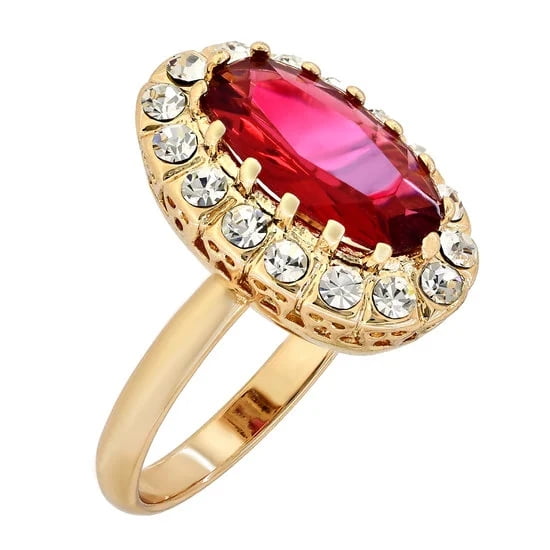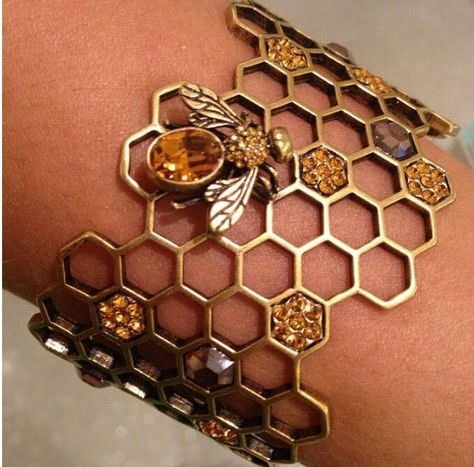The history of jewelry making in the Philippines is a rich tapestry woven with traditional techniques, foreign influences, and cultural significance. From the pre-colonial era to the contemporary period, Filipino artisans have crafted stunning pieces that reflect their heritage and creativity. This article will delve into the fascinating journey of Philippine jewelry making, exploring its evolution through different historical periods and its cultural importance.
Before the arrival of foreign colonizers, the Philippines already had a flourishing tradition of jewelry making. Using traditional techniques and indigenous materials such as gold, silver, pearls, and shells, pre-colonial Filipino artisans created intricate adornments that reflected their connection to nature and their social status.
The Spanish colonial period introduced European styles and materials to the local jewelry industry, while the American colonial period brought modernization and industrialization. World War II and its aftermath led to adaptations in style and materials as Filipinos navigated through changing times.
Today, contemporary Filipino jewelry making is experiencing a revival of traditional techniques combined with innovative design approaches. This resurgence not only showcases the country’s artistic talents but also reflects a deeper appreciation for cultural heritage. As we explore the history of Philippine jewelry making in this article, it becomes evident that this craft has not only survived over the centuries but continues to evolve with an eye towards sustainability and innovation in the future.
Pre-Colonial Era
The history of jewelry making in the Philippines dates back to the pre-colonial era, where traditional techniques and materials were used to create exquisite pieces of adornment. During this time, Filipino artisans utilized materials such as gold, silver, pearls, shells, and precious stones to craft jewelry that reflected their rich cultural heritage and craftsmanship.
Traditional Techniques
Filipino jewelry makers in the pre-colonial era employed traditional techniques such as hand-hammering, casting, and filigree work to create intricate designs. These methods required a high level of skill and expertise, resulting in unique and finely detailed pieces that showcased the artistry of the craftsmen.
Natural Materials
In addition to their exceptional craftsmanship, pre-colonial Filipino artisans also made use of a wide variety of natural materials in their jewelry making. This included indigenous pearls from Philippine seas, as well as intricately carved shells and other organic materials that were abundant in the archipelago.
The history of jewelry making in the Philippines during the pre-colonial era represents a time of creativity and innovation that laid the foundation for future generations of Filipino artisans. The traditional techniques and materials used during this period continue to influence contemporary jewelry making in the Philippines, serving as a testament to the enduring legacy of Filipino craftsmanship.
Spanish Colonial Influence
During the Spanish colonial period in the Philippines, the history of jewelry making in the country saw a significant shift with the introduction of European styles and techniques. The arrival of the Spaniards brought about a fusion of traditional Filipino craftsmanship with European design influences, resulting in a unique and distinct style of jewelry making.
Integration of European Techniques
The Spanish colonization introduced new metalworking techniques such as filigree and granulation, which were integrated into traditional Filipino jewelry making. These intricate methods added a level of sophistication to the craftsmanship, leading to the creation of ornate and elaborate pieces that showcased a blend of local artistry and European aesthetics.
Use of Precious Gemstones
Under Spanish influence, jewelry makers in the Philippines began incorporating precious gemstones such as diamonds, pearls, and emeralds into their designs. This marked a departure from traditional materials like shells, beads, and natural fibers, reflecting the evolving tastes and preferences influenced by European luxury.
Ecclesiastical Influence
Aside from personal adornment, Spanish colonial rule also impacted jewelry making through religious iconography. The Catholic Church played a significant role in influencing jewelry designs as artisans created exquisite pieces for religious ceremonies, icons, and rituals. This integration of religious symbolism further enriched the cultural significance of Philippine jewelry making during this period.
The Spanish colonial influence left an indelible mark on the history of jewelry making in the Philippines. Its impact can still be seen today through the enduring legacy of European-influenced designs and techniques that continue to shape contemporary Filipino jewelry craftsmanship.
American Colonial Period
During the American Colonial Period, the history of jewelry making in the Philippines experienced significant changes due to modernization and industrialization. This era saw the introduction of new tools and technologies that revolutionized traditional techniques, as well as the incorporation of Western influences into Filipino jewelry design.
The American colonization brought about a shift in the materials used for jewelry making in the Philippines. With trade connections to other countries expanding, Filipino artisans gained access to a wider variety of gemstones, precious metals, and other raw materials. This led to an evolution in the styles and designs of Filipino jewelry, integrating elements from American and European aesthetics.
Moreover, the industrialization during this period enabled mass production of jewelry, making it more accessible to a broader market. Alongside this development, Filipino jewelry makers also began experimenting with new techniques such as casting and metal stamping, allowing for greater intricacy and detail in their creations.
- The expansion of trade connections led to a wider variety of gemstones and materials
- Mass production made jewelry more accessible to a broader market
- Experimentation with new techniques such as casting and metal stamping
World War II and Beyond
After the tumultuous events of World War II, the history of jewelry making in the Philippines took on a new dimension as artisans and craftsmen adapted to the changing times. The war had a significant impact on the materials, techniques, and styles used in creating Filipino jewelry. With limited resources and disruptions in trade, traditional methods were challenged, leading to a shift towards more practical and functional designs.
During the post-war period, there was a resurgence of interest in indigenous materials and techniques that were integral to the history of jewelry making in the Philippines. Artisans began to incorporate local materials such as abalone, coconut shells, and bamboo into their designs, reflecting a desire to celebrate Filipino heritage and identity through their craft.
This period also saw an increase in patriotic symbols being incorporated into jewelry pieces, serving as a form of expression and resistance against colonial influences.
In more recent years, Filipino jewelry makers have continued to adapt to changing consumer preferences by embracing modern technology and sustainable practices. There is now a growing movement towards ethical sourcing of materials and environmentally friendly production methods within the industry. This commitment to innovation and sustainability bodes well for the future of jewelry making in the Philippines, ensuring that it remains both relevant and respectful of its rich historical roots.
| Period | Key Developments |
|---|---|
| Post-World War II | Resurgence of interest in indigenous materials; Incorporation of patriotic symbols |
| Contemporary Era | Embracing modern technology; Commitment to sustainability |
Contemporary Filipino Jewelry Making
In recent years, there has been a growing trend in the Philippines towards reviving traditional techniques in jewelry making. This resurgence is driven by a desire to reconnect with the country’s rich cultural heritage and promote sustainable practices. Artisans and designers are increasingly turning to the traditional methods of jewelry making that have been passed down through generations, using indigenous materials such as shell, coral, wood, and precious metals.
One of the key factors contributing to this revival is the increasing interest in supporting local craftsmanship and preserving the history of jewelry making in the Philippines. By incorporating traditional techniques into their designs, Filipino jewelers are able to create unique pieces that stand out in the global market while also celebrating and promoting their cultural identity.
Furthermore, this revival of traditional techniques has also sparked a renewed appreciation for the artistry and craftsmanship involved in creating Filipino jewelry. By embracing age-old methods such as filigree work, weaving, and metal smithing, artisans are not only preserving these ancient skills but also infusing them with contemporary aesthetics to cater to a modern audience.
Lastly, this movement towards reviving traditional techniques in Filipino jewelry making has also contributed to greater sustainability within the industry. By utilizing locally-sourced materials and employing eco-friendly production methods, artisans are not only reducing their environmental impact but also supporting local communities and preserving indigenous craftsmanship for future generations.
| Revival of Traditional Techniques | Contemporary Filipino Jewelry Making |
|---|---|
| Incorporating traditional methods into designs | Celebrating cultural identity |
| Embracing age-old techniques with modern aesthetics | Promoting sustainability within the industry |
Cultural Significance of Philippine Jewelry
Jewelry has played a significant role in Filipino culture for centuries, with each piece carrying deep symbolism and meaning. The history of jewelry making in the Philippines is rich and diverse, spanning from the pre-colonial era to the present day. Throughout this time, jewelry has served not only as adornment but also as a reflection of social status, religious beliefs, and cultural identity.
In Filipino culture, jewelry has always been more than just decorative accessories; they hold symbolic significance that is passed down from generation to generation. Here are some examples of the cultural significance of Philippine jewelry:
- The use of gold in pre-colonial Filipino jewelry symbolized wealth and high social standing. Gold ornaments such as necklaces, earrings, and bracelets were worn by the elite as a display of their status in society.
- Ancestors used jewelry made from natural materials such as shells, pearls, and ivory to adorn themselves during ritualistic ceremonies. These pieces held religious significance and were believed to offer protection and blessings from spirits.
- Specific designs and motifs on traditional Filipino jewelry often conveyed intricate details about a person’s regional origin or tribal affiliation. These symbols served as a form of identification within the community and were also believed to have protective powers.
The cultural significance of Philippine jewelry extends beyond mere decoration; it acts as a visual language that communicates history, beliefs, and values within Filipino society. As contemporary Filipino jewelers continue to revive traditional techniques and incorporate modern innovation into their creations, these symbolic meanings remain an integral part of each piece crafted.
The Future of Jewelry Making in the Philippines
One of the key aspects driving the future of jewelry making in the Philippines is the focus on sustainability. As awareness of environmental issues grows worldwide, Filipino jewelers are incorporating sustainable practices into their work, such as using ethically-sourced materials and implementing eco-friendly production processes. By doing so, they not only contribute to the preservation of the environment but also meet the growing demand from consumers who value ethical and sustainable products.
In addition to sustainability, innovation plays a crucial role in shaping the future of Filipino jewelry making. Contemporary jewelers are combining traditional techniques with modern design concepts, resulting in unique and innovative pieces that reflect both heritage and creativity.
Moreover, advancements in technology have opened up new possibilities for experimentation with materials and production methods, pushing the boundaries of what is possible in jewelry design. This spirit of innovation ensures that Filipino jewelry continues to evolve while honoring its rich history.
Conclusion
In conclusion, the history of jewelry making in the Philippines is a rich tapestry of cultural influences, traditional techniques, and a resilient spirit that has endured through centuries of change. From the pre-colonial era to the contemporary revival of traditional techniques, Filipino jewelry making has evolved and adapted while retaining its unique identity.
The Spanish and American colonial periods brought new styles and materials to the craft, leading to modernization and industrialization. Even amidst the challenges of World War II and beyond, Filipino jewelry makers have continued to innovate, adapt, and uphold their traditions.
The cultural significance of Philippine jewelry cannot be overstated, as each piece carries with it layers of symbolic meaning and historical context. These pieces not only serve as adornments but also as expressions of heritage and stories passed down through generations.
As we look towards the future of jewelry making in the Philippines, there is optimism for innovation and sustainability. With a growing emphasis on preserving traditional craftsmanship and environmentally responsible practices, Filipino jewelry makers are poised to continue thriving in the global market.
In reflecting on the history of jewelry making in the Philippines, it becomes clear that this art form is deeply woven into the fabric of Filipino culture. The future holds great promise for this ancient tradition as it continues to evolve while staying true to its roots. As we celebrate the resilience and creativity of Filipino jewelry makers, we also look forward to witnessing their continued success on both a local and global scale.
Frequently Asked Questions
What Jewelry Is Philippines Known For?
The Philippines is known for its intricate and colorful handcrafted jewelry made from materials like gold, silver, pearls, and other precious stones. Filipino jewelry often features traditional designs and reflects the country’s rich cultural heritage.
What Is the Oldest Jewelry in the Philippines?
The oldest jewelry in the Philippines is believed to be the “Manunggul Jar,” a burial jar discovered in Palawan dating back to the Neolithic period. The jar featured intricate carvings of human figures adorned with jewelry, providing insight into ancient Filipino adornment practices.
What Is the History of the Beginning of Jewelry Making?
The history of jewelry making dates back thousands of years to when early humans began adorning themselves with shells, bones, and feathers as a form of personal adornment or for religious and social significance. Over time, different cultures developed their own techniques and styles for creating jewelry, leading to the diverse range of designs we see today.

Welcome to my jewelry blog! My name is Sarah and I am the owner of this blog.
I love making jewelry and sharing my creations with others.
So whether you’re someone who loves wearing jewelry yourself or simply enjoys learning about it, be sure to check out my blog for insightful posts on everything related to this exciting topic!





